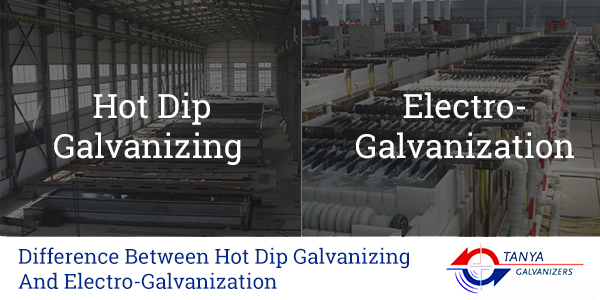Galvanization is also known as galvanization is considered to be the technique to apply protective zinc coating for the iron or steel, for preventing rusting. Care is to be taken to the fullest extent in several services. This is actually to prevent the pipeline from getting rusted. Otherwise, it can prove to be hazardous to the personnel, may cause malfunction or damage of the instrument, equipment, etc. It is for this particular reason that piping is said to be galvanized.
Some of the commonly used techniques for the purpose of galvanization are stated to be electro-galvanizing and hot dip galvanizing.
Know the differences
If the plan is to order the same, then it is necessary to undertake proper and thorough research of the available materials in the market. This can help the person to be safe with his selection and ensure that the right and most appropriate products are purchased that meets specific needs and requirements of the business. Otherwise, it will be just merely waste of precious time and money. The professionals offering hot dip galvanizing services can help with the selection process.
Below are given some of the basic differences found between electro-galvanization and hot dipped galvanization. Also are provided the benefits offered by both over the other.
For hot dip galvanization, a very rigid cleaning process is followed, which is generally known as the 7 bath process. Cleaning is done in alkaline solution, pickling, water rinsing, fluxing. In case, of electro-galvanization, there is not followed stringent cleaning method.
Steel is said to be dipped in molten zinc bath @ 460 degree Celsius to achieve the coat for hot dip galvanization. But in the latter, steel is prepared in cathode in electrolytic cell, thus forming coating using electroplating process.
Hot dip galvanization produces on steel surface Fe-Zn alloy layer, leaving behind pure zinc coating on outer surface. This alloy is quite hard. Damage is not caused to the coating by the usual abrasion, even though some damage may take place to the pure soft zinc present at the top. Electro galvanization produces Zn layer on surface that is termed to be not continuous with that of steel metallurgically.
Electro-galvanization has very low life, ranging from several months to some years only. But, hot dip galvanization is known to have very high life averaging between 20 to 50 years.
Electro-galvanization comes with excellent finish. However, hot dip galvanization has dull, unpleasant finish.
The coating thickness of hot dip galvanization generally is about 80-100 µm. The coating thickness entirely depends upon the dipping duration. Also, it is affected by the steel’s roughness and composition. For electro-galvanization, coating thickness generally is about 10 to 12 µm. here, the coating thickness is determined upon the electrolyte temperature and current density.
Hot dip galvanization is said to have normal coat thickness of about 40% much more expensive when compared to electro-galvanizing. The latter has normal coat thickness that is much affordable. But, the cost is said to increase proportionately with higher coating thickness. Hence, it becomes expensive.
Hot dip galvanization is provided with non-uniform coating, while the other one with uniform coating.
Hot dip galvanization is suitable for all sizes, while electro-galvanization is suitable exclusively for smaller components.
To know more about the differences between hot dip galvanizing and electro-galvanization, it will be useful to take the help of the reputed companies offering top class hot dip galvanizing services.
